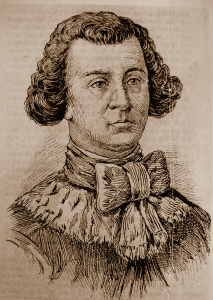Thomas Dongan, Earl of Limerick
Governor General of New York 1683–1688
The Dongan’s first came to prominence in the Middle Ages when members of the family obtained official positions in the service of the Crown. As a reward the family eventually acquired the Manor of Kildrought, now known as Celbridge in County Kildare.
The most famous member of the family was Thomas Dongon who was born in Castletown, Celbridge in 1634. He joined the French army during the Cromwellian period and saw active service as a Colonel in an Irish regiment and was appointed to a prominent position Algiers. Following the restoration he joined the army of King Charles II and was subsequently appointed an officer in the service of the King’s brother, James Duke of York.
In 1683 he was appointed Governor of New York. On arrival in New York he described the town in his writings as consisting of 207 houses and a population of 2000 inhabitants in addition to slaves. He purchased an estate in Staten Island and named it ‘Castletown’ after the family seat at Celbridge. Dongon was described as ‘an Irishman of broad statesman mind and with all the personal magnetism that the Blarney stone is said to impart’. The population of New York at the time consisted of several nationalities, Dutch, Swedish, Germans, English and Irish. Dongan decided to give the inhabitants a form of self-rule and was responsible for issuing the ‘Dongon Charter’ which is today regarded as the basis and foundation of municipal law in New York.
Dongon also became actively involved in the expansion of New York in a northerly direction into what was then French territory. Today, this is the Albany area of New York State. The French became alarmed and contacted King Louis XIV in Paris who in turn contacted King James. King James who was allied to Louis and needed his support terminated Dongons appointment as Governor of New York. A deeply disappointed Dongon then retired to his estate in Staten Island.
Shortly afterwards the Glorious Revolution occurred and the Williamites came to power. In New York there was a wave of anti-Jabobite activity and Dongon fled the city for London in 1691. In London the new monarch King William recognised the achievements of Dongon and granted him a pension. He also granted him an income from his brother’s forfeited estate in Ireland Castletown in Celbridge. Thomas Dongon died in 1715 and was interred in Middlesex, England.
In the first decade of the 18th century the Dongons, were obliged to sell the interest they held in their estates at Castletown, Celbridge. The family then relocated to America where they had property in Staten Island, New York. However, in subsequent conflicts in the new world they continually found themselves on the loosing side. When the American colonies fought for their Independence in the 1770’s the Dongon family supported the Crown and a member of the family died in an engagement against the Patriot forces. The next conflict in the United States was the Civil War in the 1860’s. The Dongons, as a family from aristocratic origin regarded themselves as having more in common with the gentlemen Confederates of the South and once again were on the loosing side in a major conflict.
Today numerous relatives of Thomas Dongan are found in many parts of the United States.

